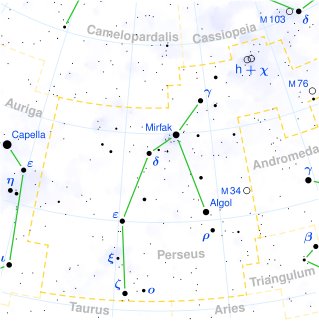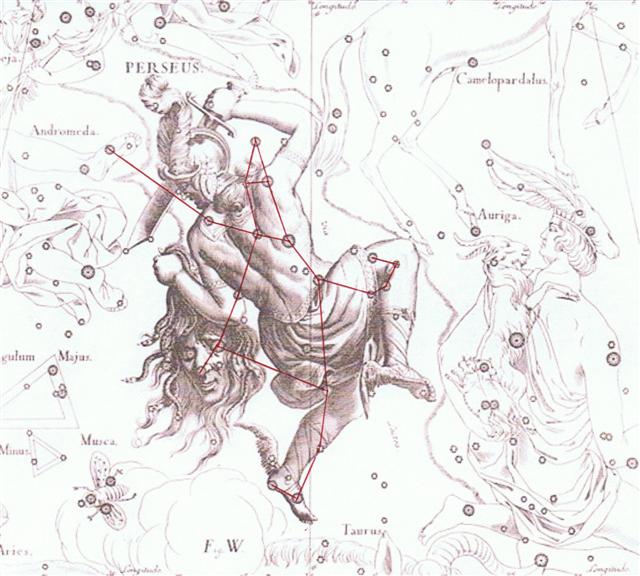1. North of the equator the right eye of the Bull is at the beginning of the summer year: "Aldebaran was the divine star in the worship of the tribe Misām, who thought that it brought rain, and that its heliacal rising unattended by showers portended a barren year." (Allen) This example (which I picked out because of Misām, the name of the tribe, which reminded me of the star Misam, κ Persei) illustrates how Aldebaran 'personifies' the summer ahead. We have located Misam at Gb8-13, close to the head of Medusa and perhaps it represents the last day of the old winter year: ... This was the beginning of the season called Han-shih-tsieh, or 'eating of cold food'. For three days all household fires remained extinct as a preparation for the solemn renewal of the fire ... 81 * 3 = 243, a number which could allude to glyph number 243 (Gb1-13, seven lines earlier) where we can seee how a head is going down:
At Rau Hei we have seen some of the implications of number 243. Here we can count 17 (from Gb8-13 to the end of side b) + 243 = 260. 260 + 64 = 324 days = 1296 right ascension minutes = 90 % of 1440 (= 360 * 4) = 21h 6m (I cannot write 06m because we should probably read 216). However, the star Misam seems to have been deliberately hidden away from discussion. As my evidence I will first present the star map which in Wikipedia accompanies the meagre information:
"Kappa Persei (κ Per) is a star in the constellation Perseus. It has the traditional name Misam. Misam belongs to the spectral class K0 and has [an] apparent magnitude [of] +3.8. It is 112 light years from Earth. Kappa Persei is a triple star system consisting of a spectroscopic double star with a wider companion." But κ Persei is not shown on the map. Neither is Allen mentioning κ Persei, but he has another Misam: "χ, a multiple star, and the little h mark two clusters noticeable with the naked eye, Nos. 884 and 869 of the New General Catalogue, 30' and 15' in diameter, almost connected, and apparently a protuberant part of the Milky Way. They were the Arabians' Misam al Thurayya, the Wrist of - i.e. - near to - the Pleiades. Hipparchos seems to have been the first to record them, which he did as νεφελοιδής, a 'cloudy spot'; Ptolemy, as συστροφή, a 'dense mass'; and subsequent astronomers down to Galileo's day similarly considered them nebulous. The Alfonsine Tables said, revolutio nebulosa, and the Almagest of 1551, girus ille in capulo ensis, this girus - correctly gyrus - signifying a circle. They seem strangely to have escaped the notice of astrologers, who as a rule, devoted much attention to clusters as harmful objects which portended accidents to sight and blindness." These nebulosities (χ and h Persei) resemble Hyadum I and Hyadum II in possibly marking where a cycle (gyrus) is completed (and thus they will be unlucky for the old ruler, who soon will disappear from sight). But χ and h Persei belong not in the 5th hour but in the 3rd:
The star Misam (κ Persei) - on the nearly vertical line between Algol and ι Persei - comes 14 days later. Misam is at the shadowy left side of the back of Perseus and Misam al Thurayya is at his sword hand:
|






